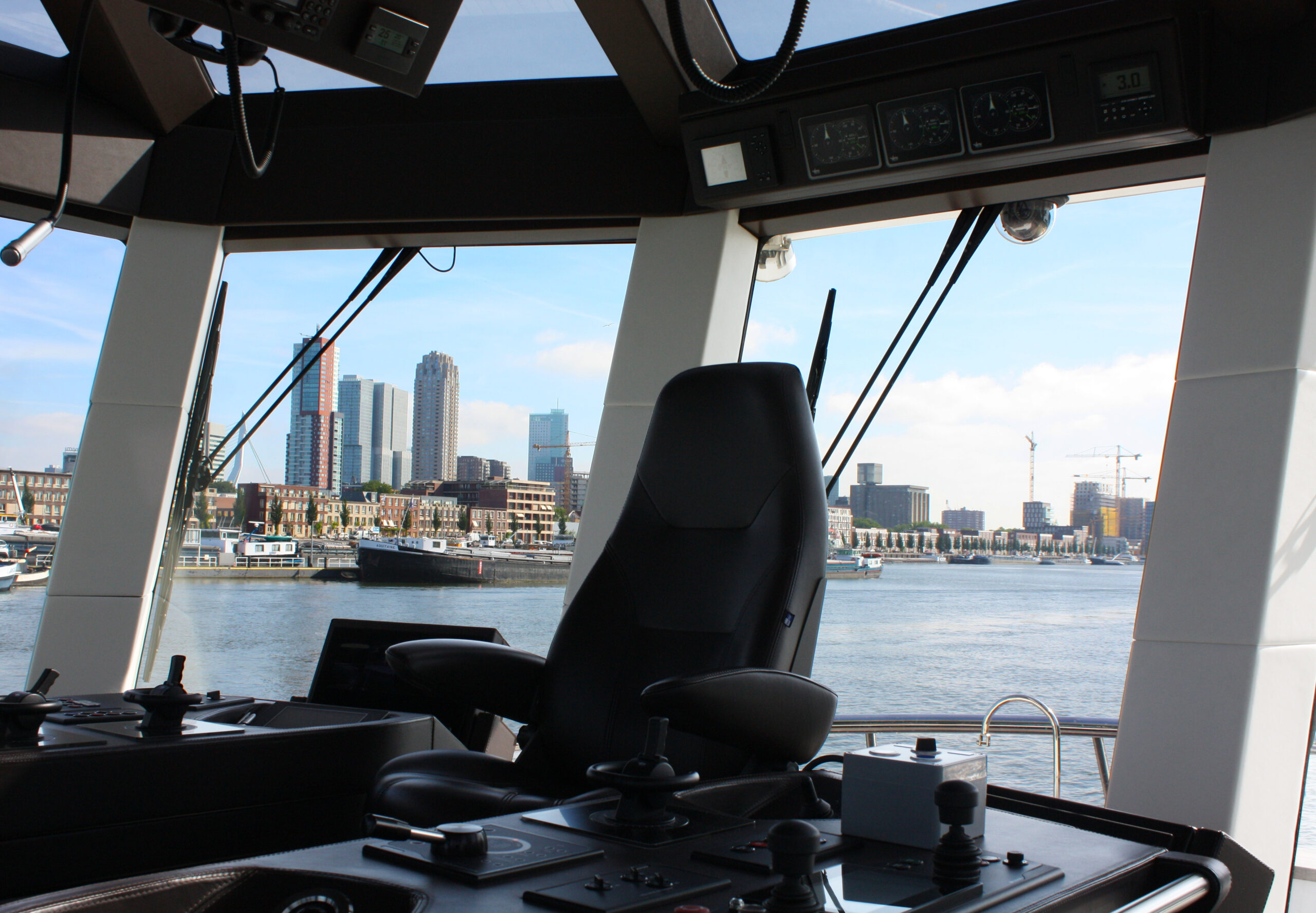First vessel in the world that autonomously sails the most optimal route.
Maritime service provider KOTUG International, ship design company Rotortug, and tech start-up Captain AI today demonstrated the first boat in the world that sails the most optimal route without human intervention at the Smart Shipping event of the Netherlands Forum for Smart Shipping. A significant milestone on the road towards fully autonomous and sustainable sailing.
In the summer of 2018, KOTUG and Rotortug already demonstrated that it is possible to operate a tugboat in the port of Rotterdam, the Netherlands, remotely from Marseille, France. That was the first step on the roadmap towards fully autonomous sailing. In collaboration with Captain AI, it is now possible to safely sail the Rotortug “RT Borkum” autonomously on the river Nieuwe Maas in Rotterdam using the Captain AI Route Planner and Autopilot. “The route planner can be seen as the Google Maps for waterways,” says Vincent Wegener of Captain AI. “It calculates the route, which the boat then autonomously sails, using our autopilot software.”
To define this route as efficiently as possible, Captain AI’s software is connected to the KOTUG Optiport dispatch planning software, enabling optimized route planning in real-time, based on AIS data and Artificial Intelligence. Patrick Everts of KOTUG: “The digital captain has to know what the vessel’s destination is and how to get there in the most efficient way. Linking Captain AI’s software to OptiPort is not only making the skipper’s life easier because vessels can autonomously navigate the optimal route, but is also saving on fuel and CO2 emission”.
The “RT Borkum” already has undergone several successful operational tests in the busiest port of Europe, proving for the first time that autonomous planning followed by autonomous sailing works in practice.
KOTUG International and Captain AI have entered into a partnership to further develop and commercialize the software. The next step is making the software suitable for large-scale applications and to explore matters such as safety and legislation, in consultation with the users and legislators.
